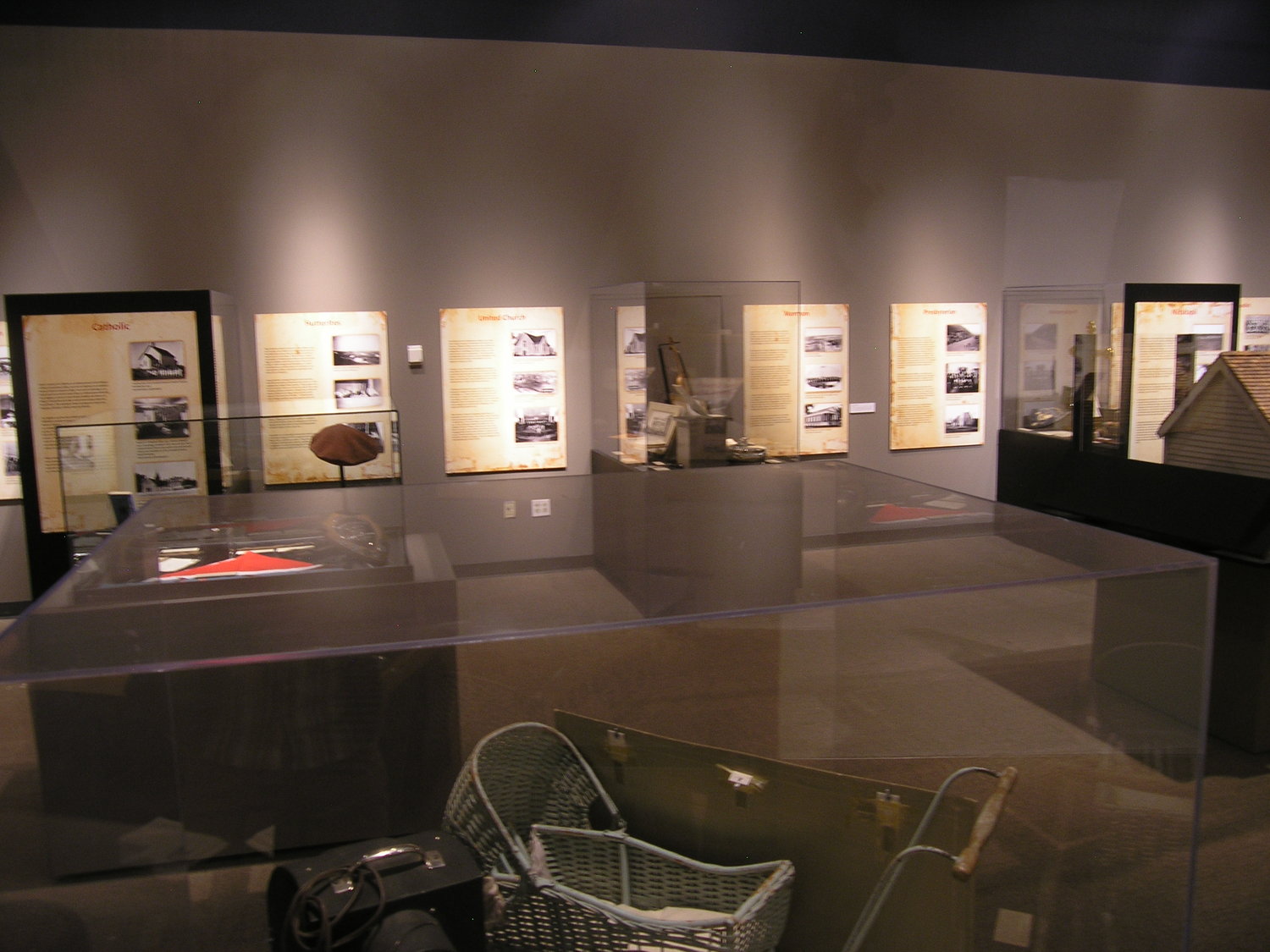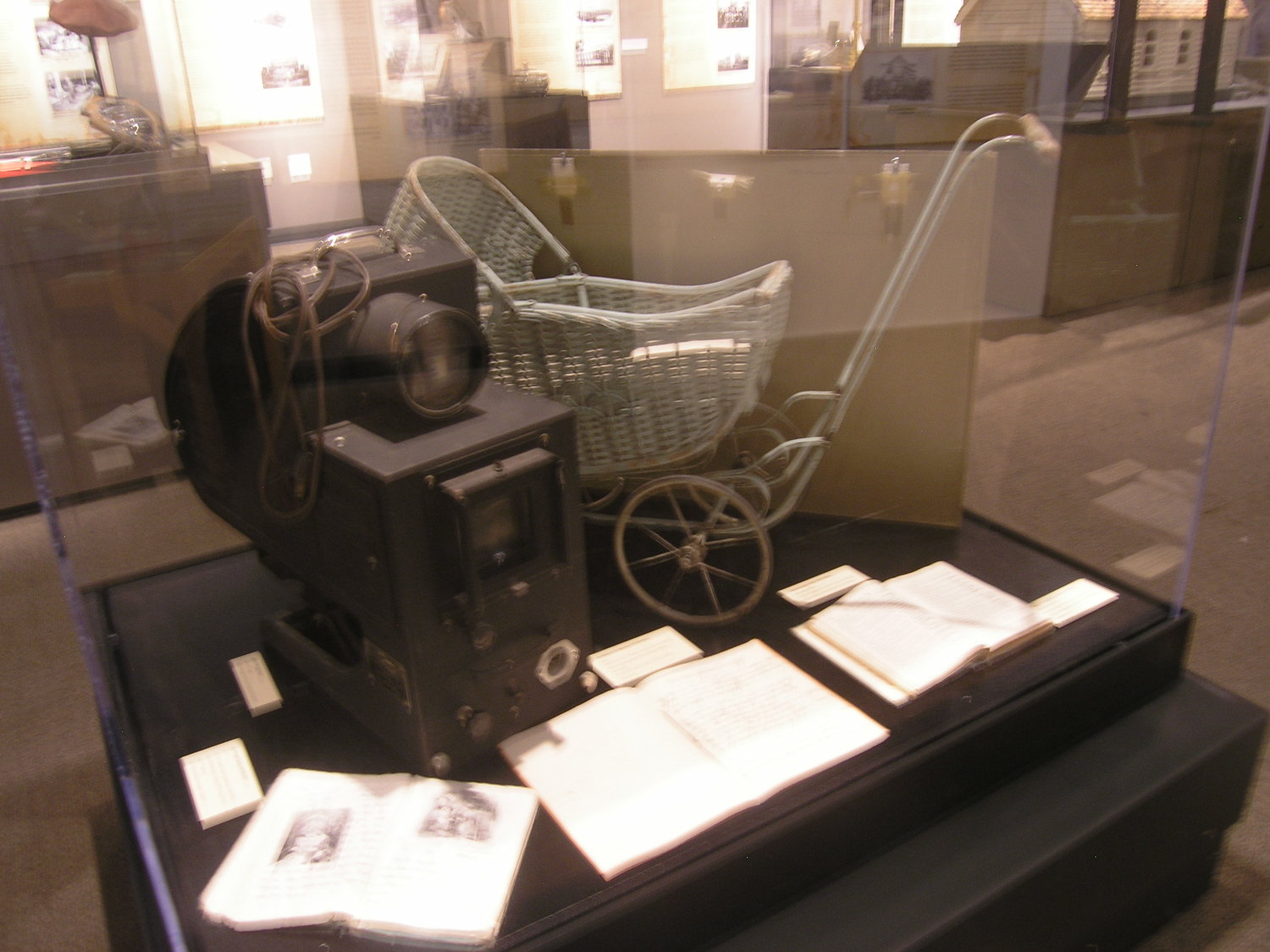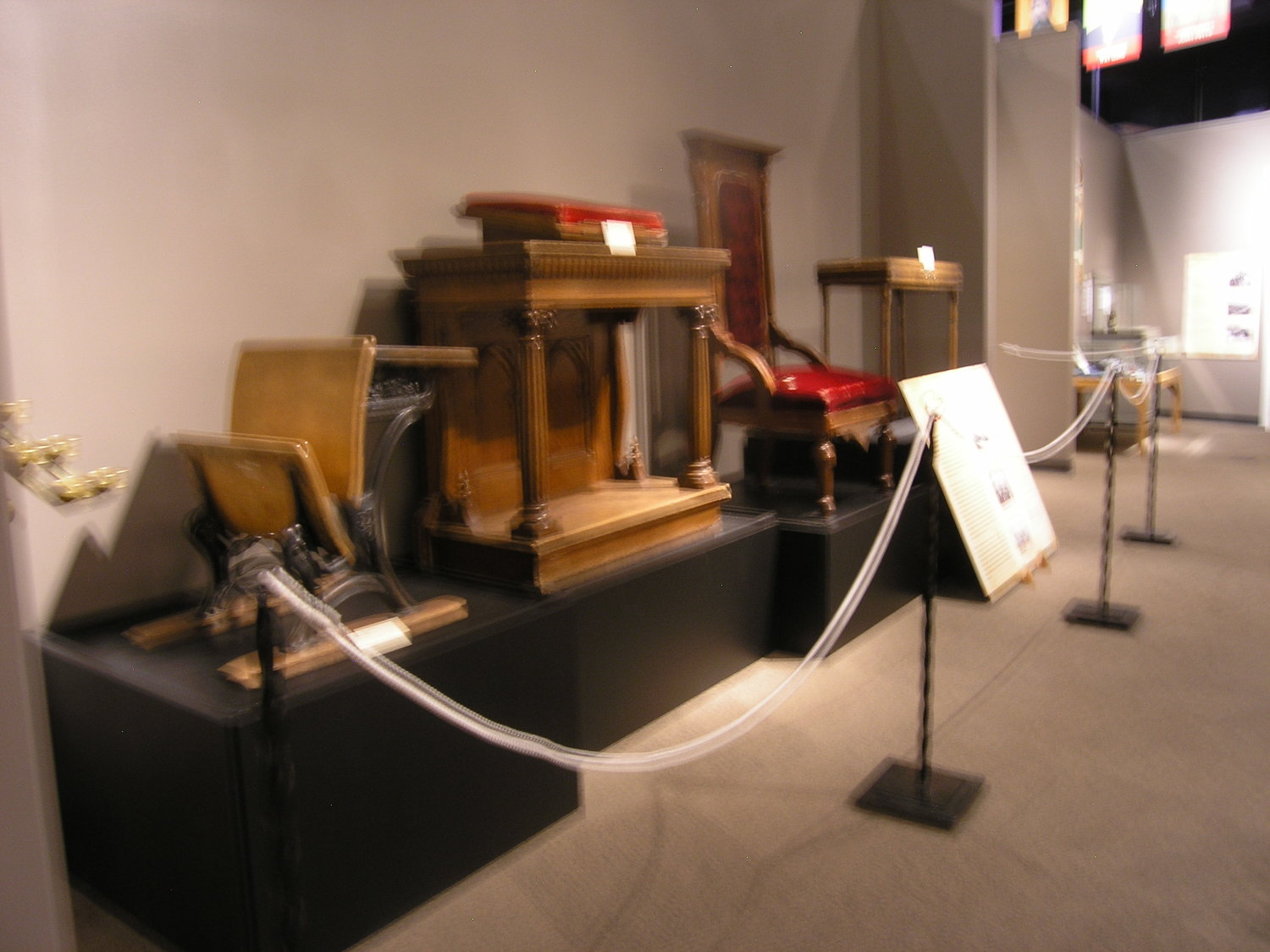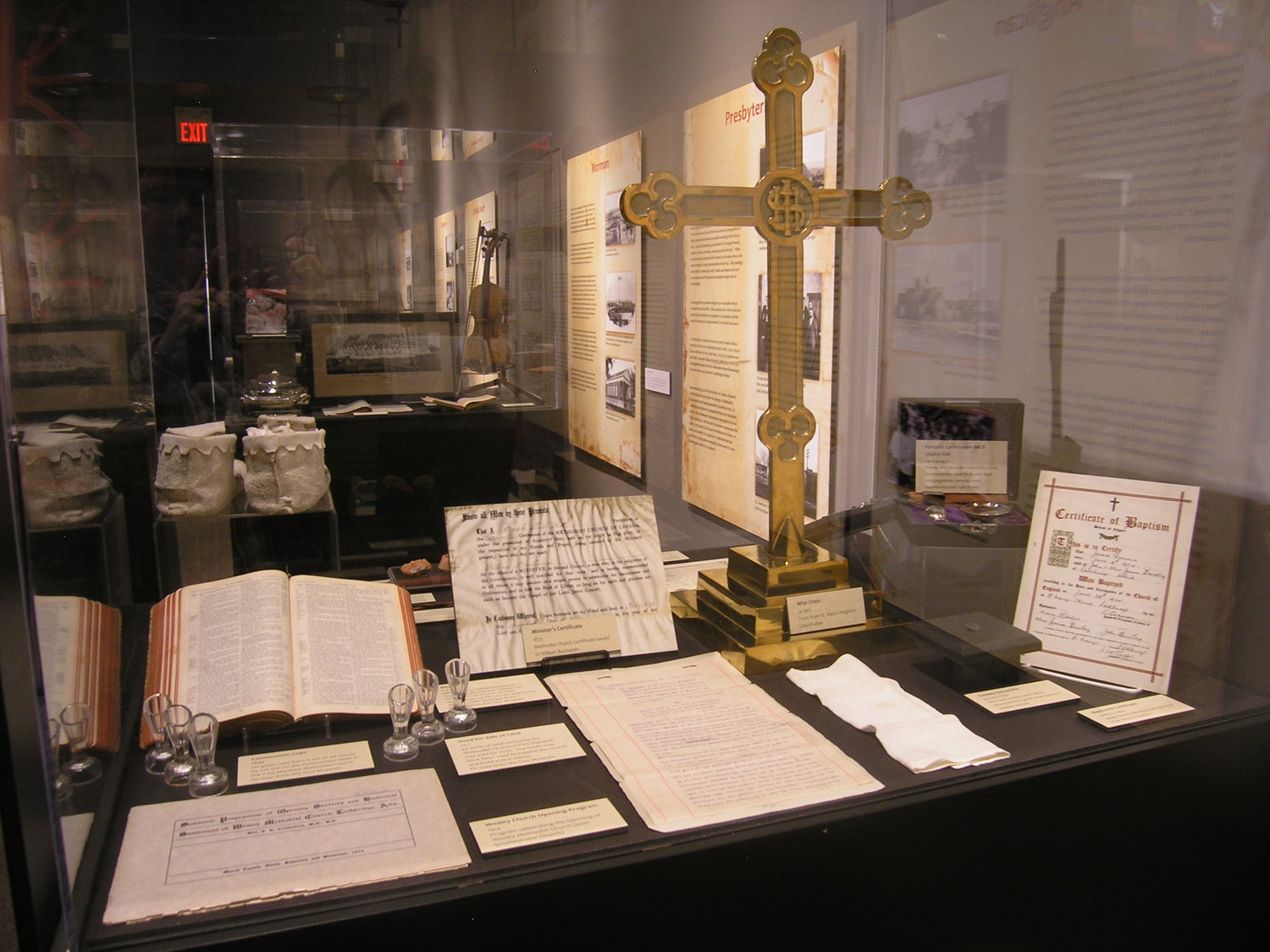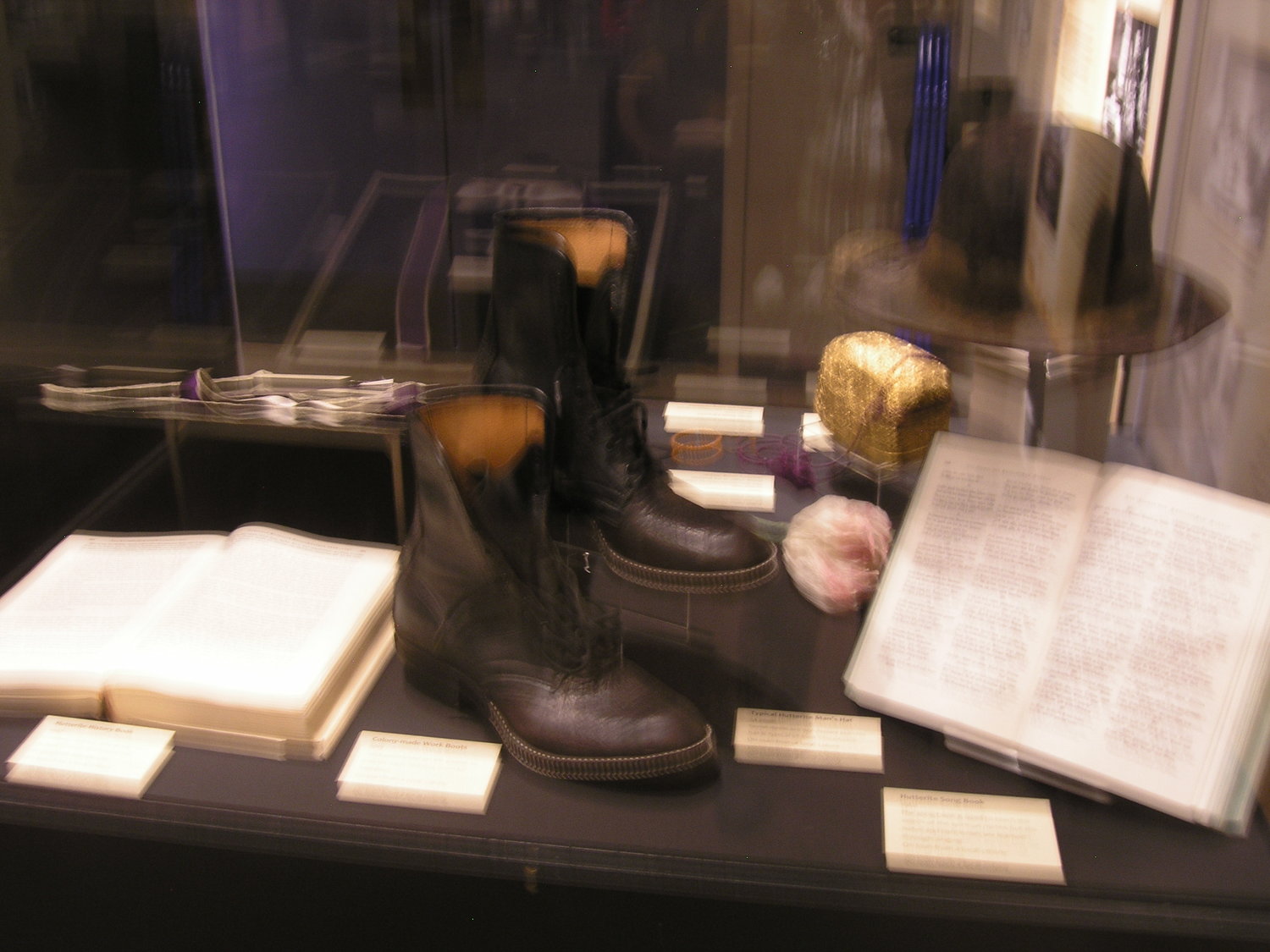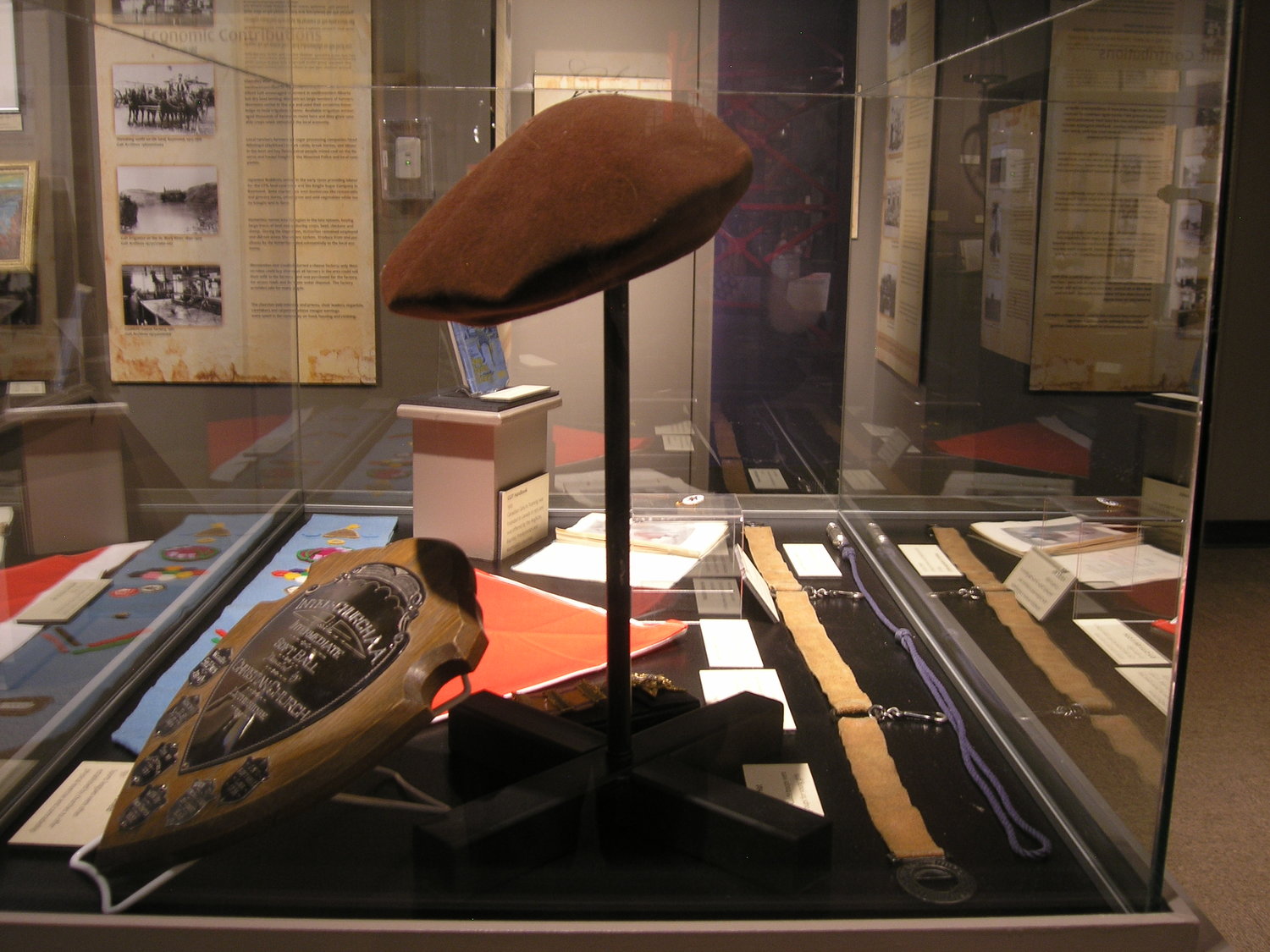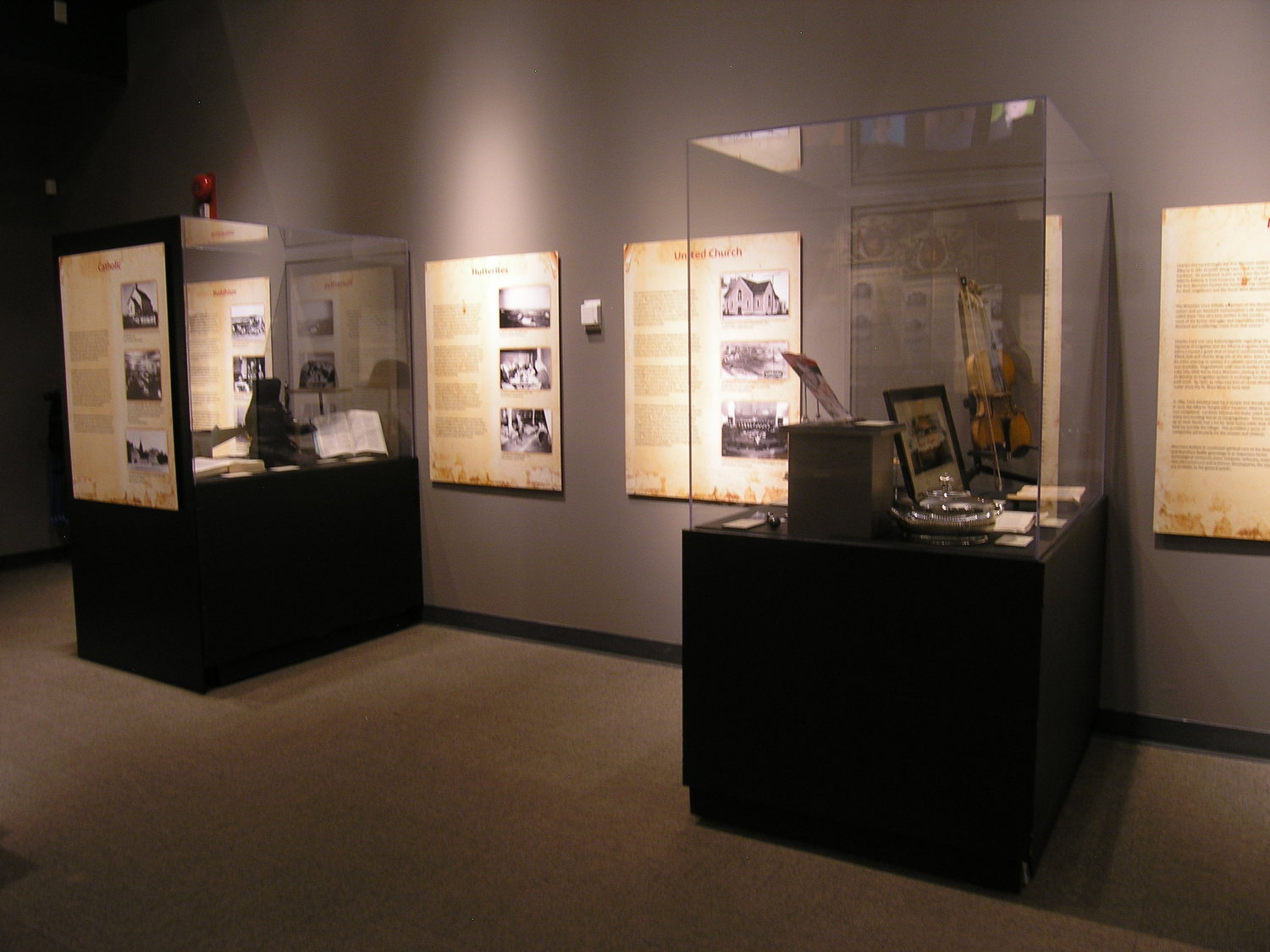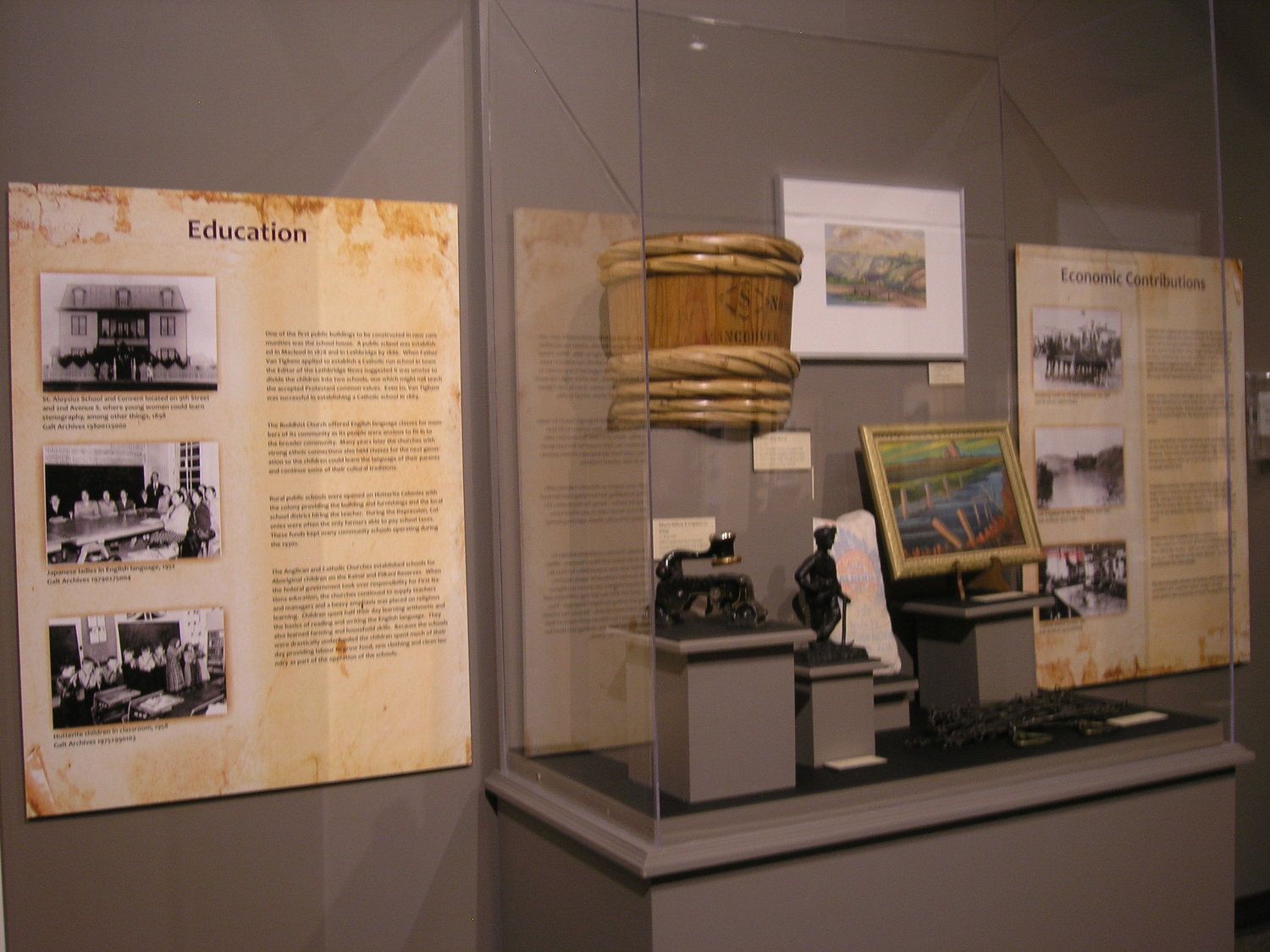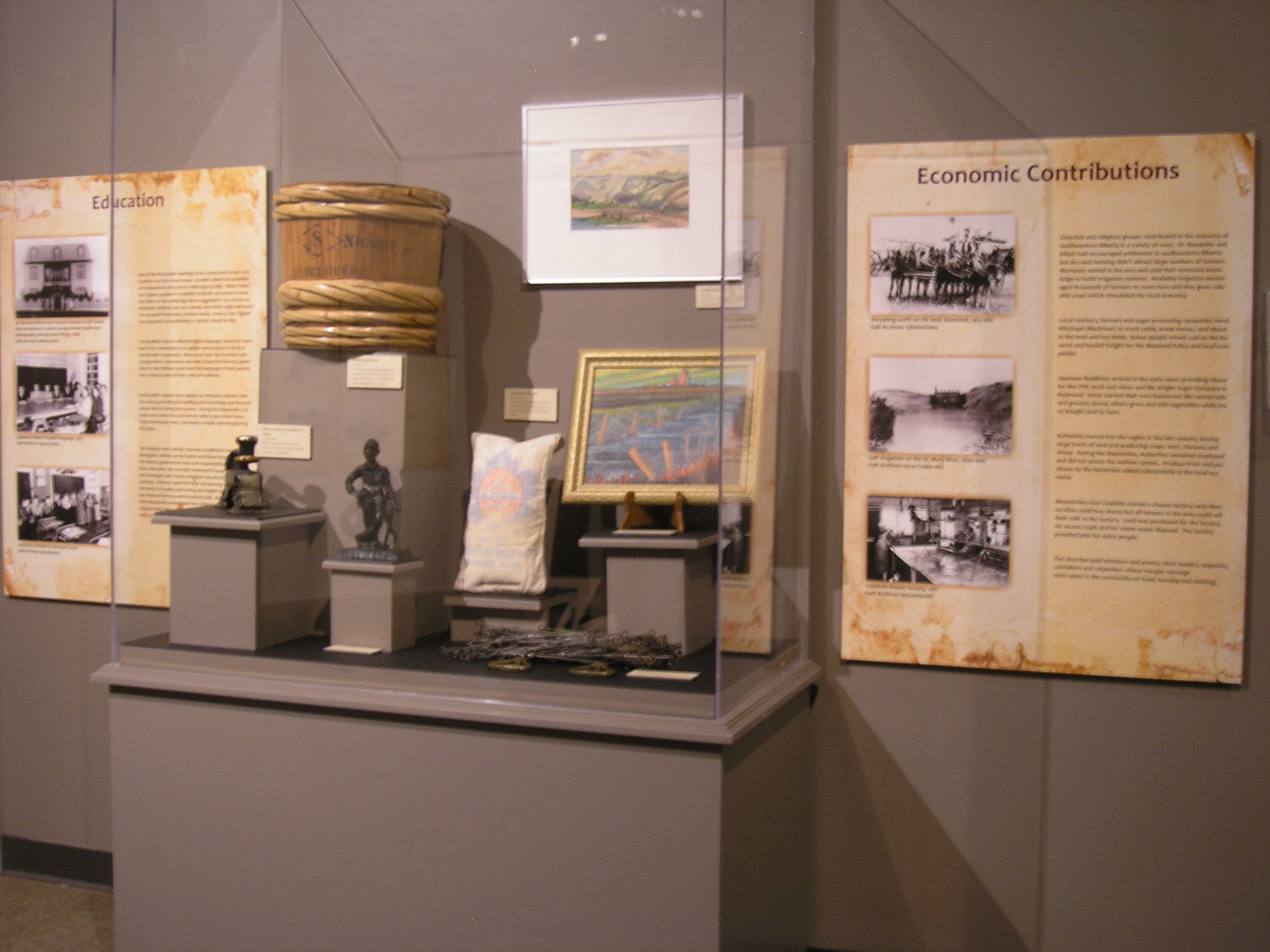Southwestern Alberta has long been called a “Bible Belt”, though the region includes both a wide variety of Bible-related religious organizations and others which are not. “Religion in the Bible Belt”, a new exhibit at the Galt Museum & Archives explores how people from all groups contributed to the many social and economic aspects of southwestern Alberta from the late 1800s to the late 1930s. The exhibit runs September 21 – January 12, 2014.
“This exhibition is based on the assumption that this region is unique because of the contributions made to the broader community by people from all of the religious groups,” says Curator Wendy Aitkens. “They provided a social welfare network, started schools, established medical care, became politically involved, built impressive buildings, organized social groups for all ages, and offered musical and theatrical entertainment for the whole community.”
1901 statistics for Lethbridge indicated 33% of the population was Presbyterian, 21% Anglican, 19% Roman Catholic, 12% Methodist and 15% belonged to other religions or did not identify any religious affiliation. Numbers for the same year for North Ward (now north Lethbridge), showed 16% were Presbyterian, 12% Anglican, 39% Catholic, 10% Methodist, and 23% other and those with no religious affiliation identified. In rural areas there were Hutterites, Mennonites, Doukhobors, Dutch and Christian Reformed, Lutherans, Baptists, Buddhists and others.
“The scope of this topic is substantial so the choices of the denominations and organizations mentioned were based on census numbers, land ownership and wide-ranging influence in the community,” says Aitkens. “The exhibit explores Niitsitapii (Blackfoot), Catholic, Anglican, Methodist, Presbyterian, United Church, Mormon, Buddhism, Hutterites, and Mennonites. Others are not mentioned but that does not mean their successes and influence are any less important.”
Artifacts and archival photos for the exhibition have come from the Galt’s collections, as well as from the collections of the Glenbow Archives, Gem of the West in Coaldale, Fort Museum in Fort Macleod, the Court House Museum in Cardston, a local Hutterite colony and local churches.



